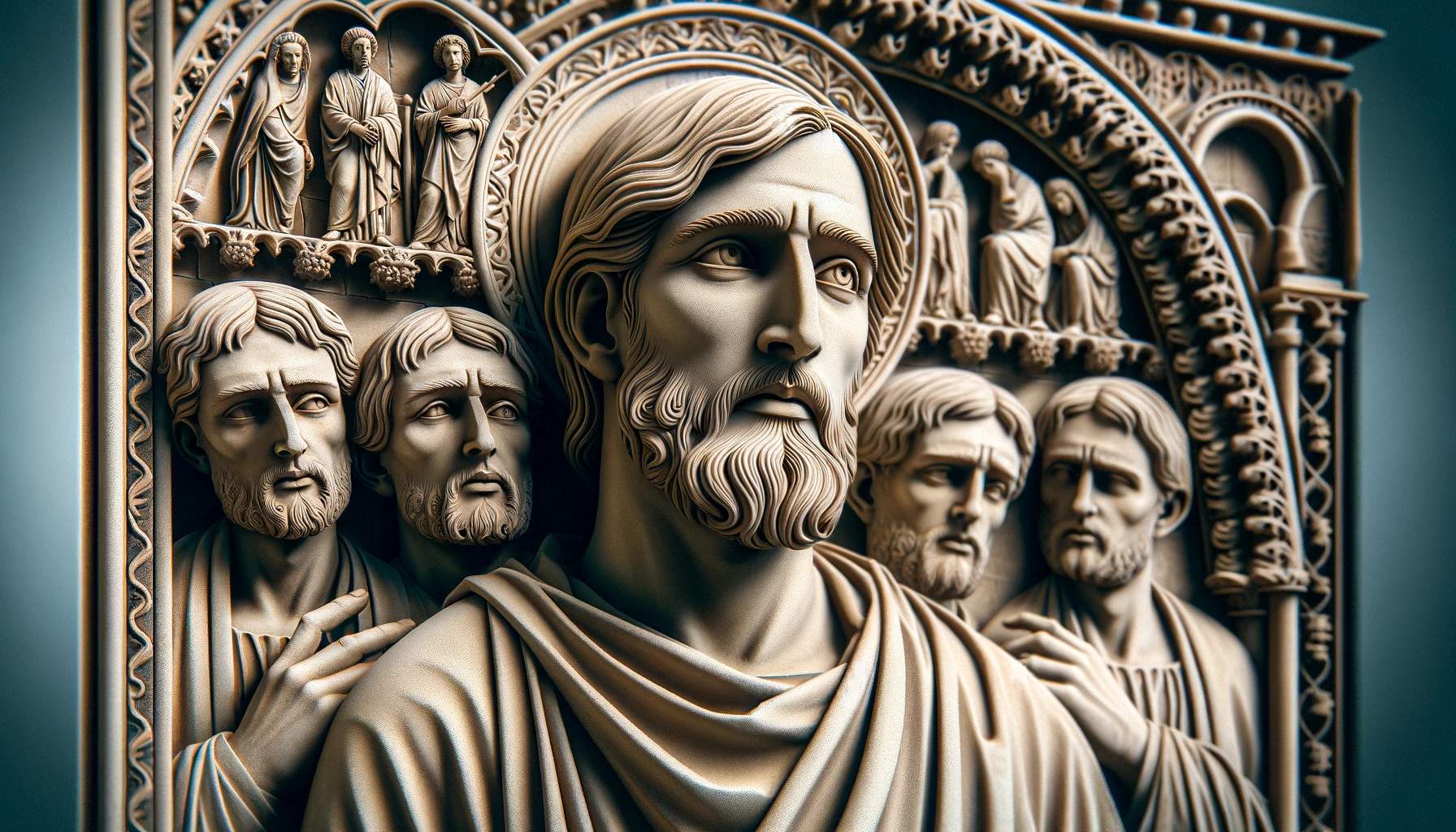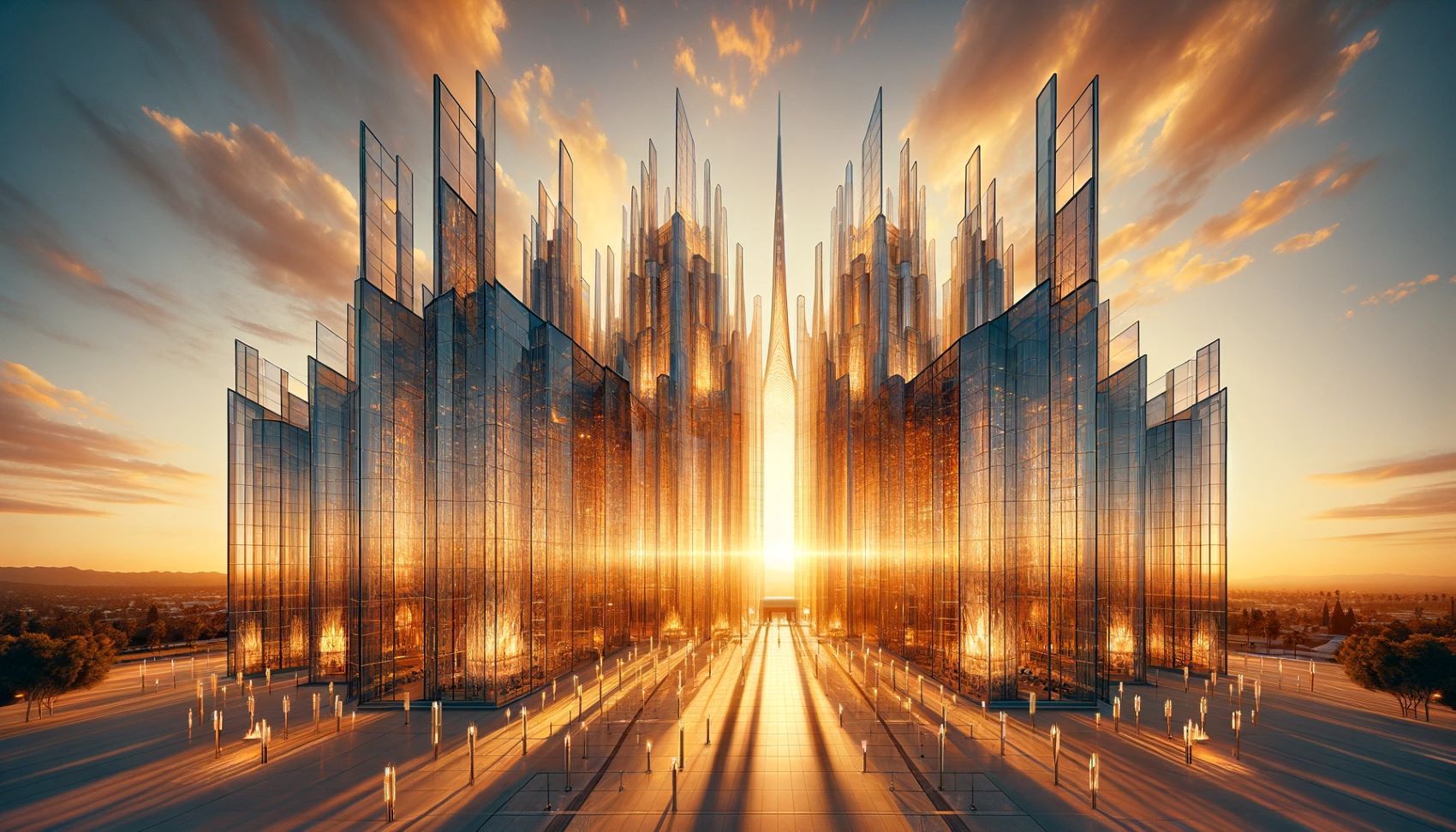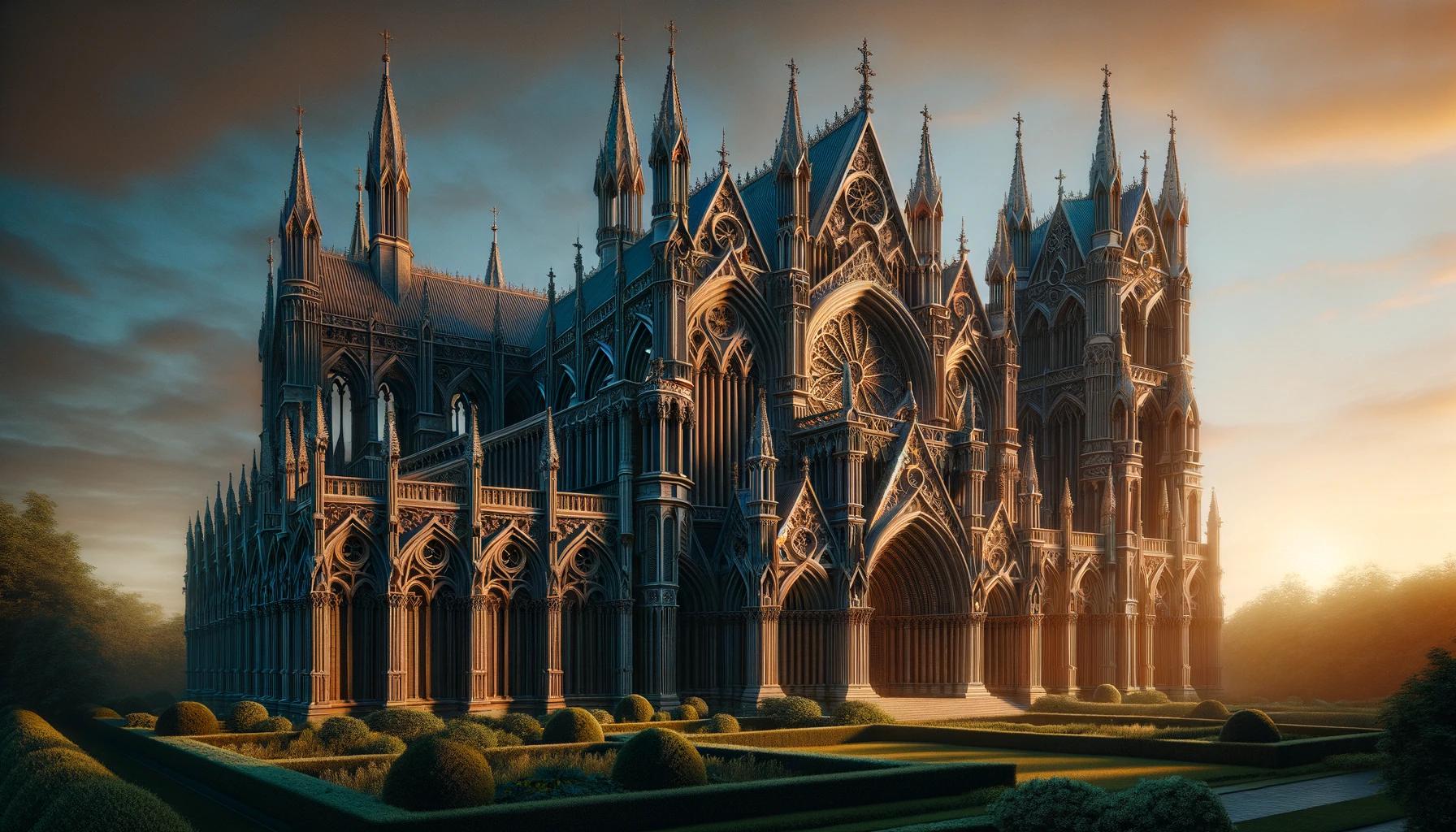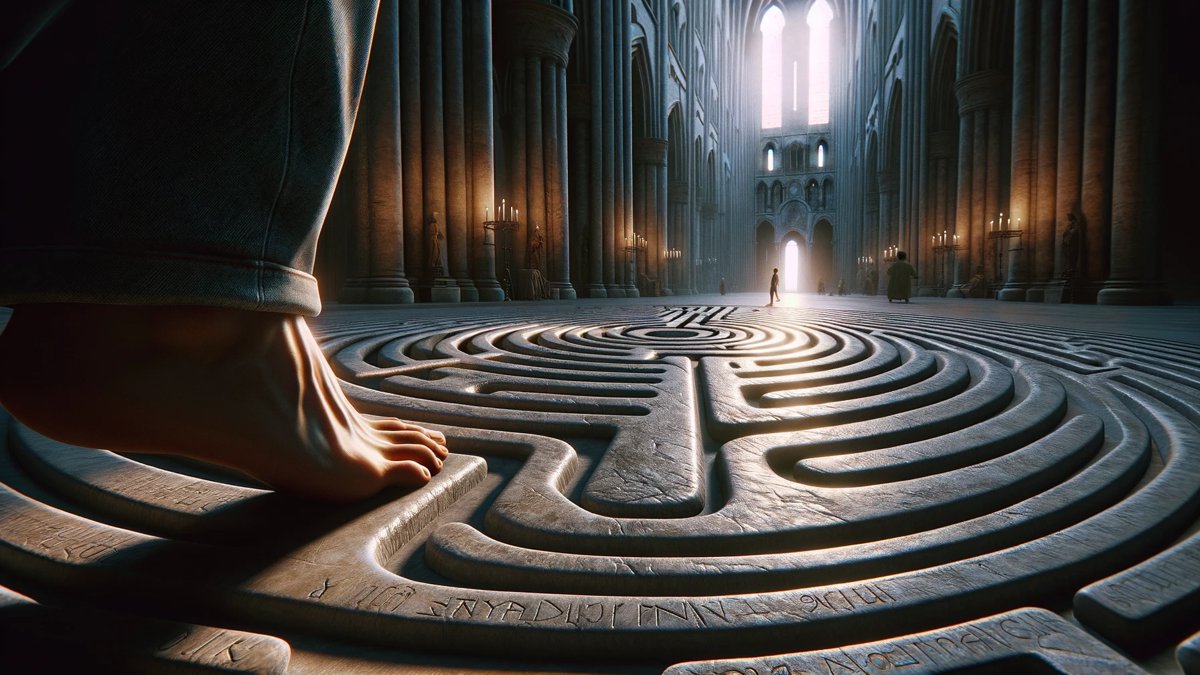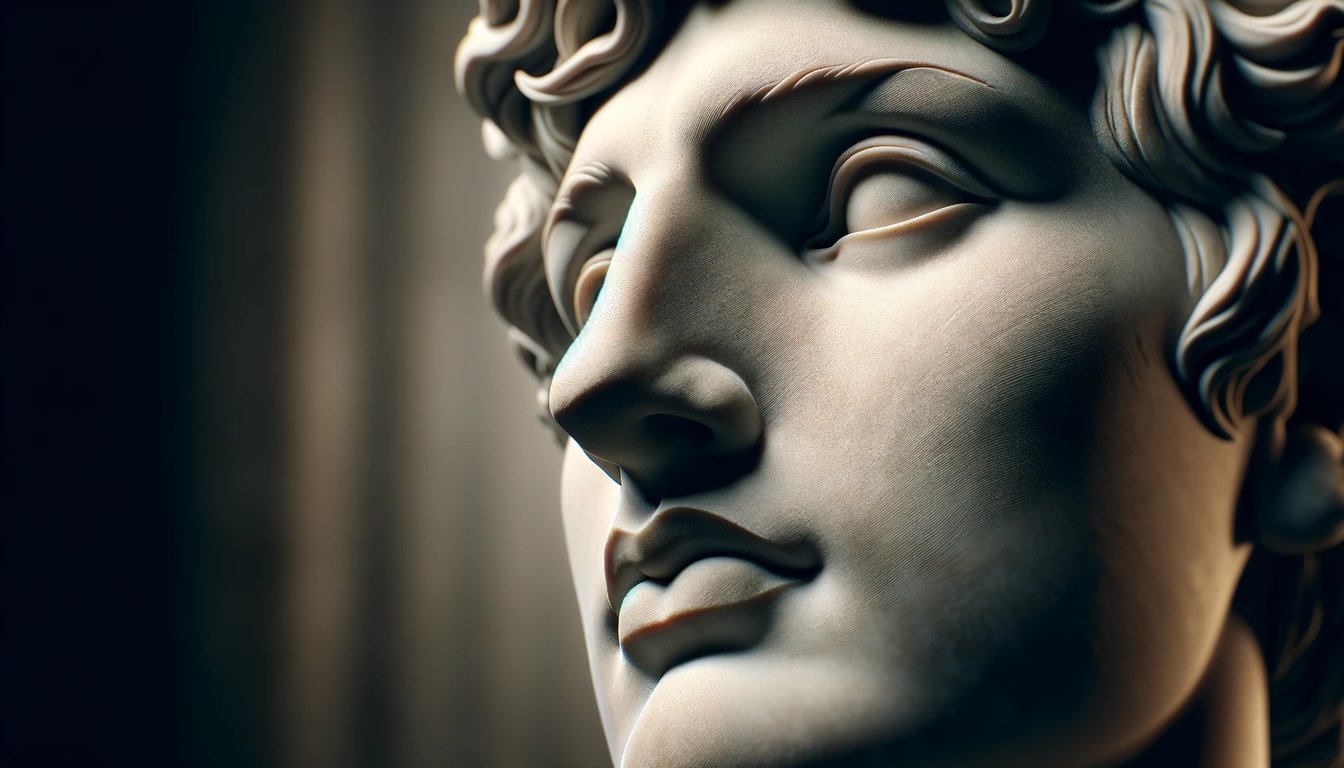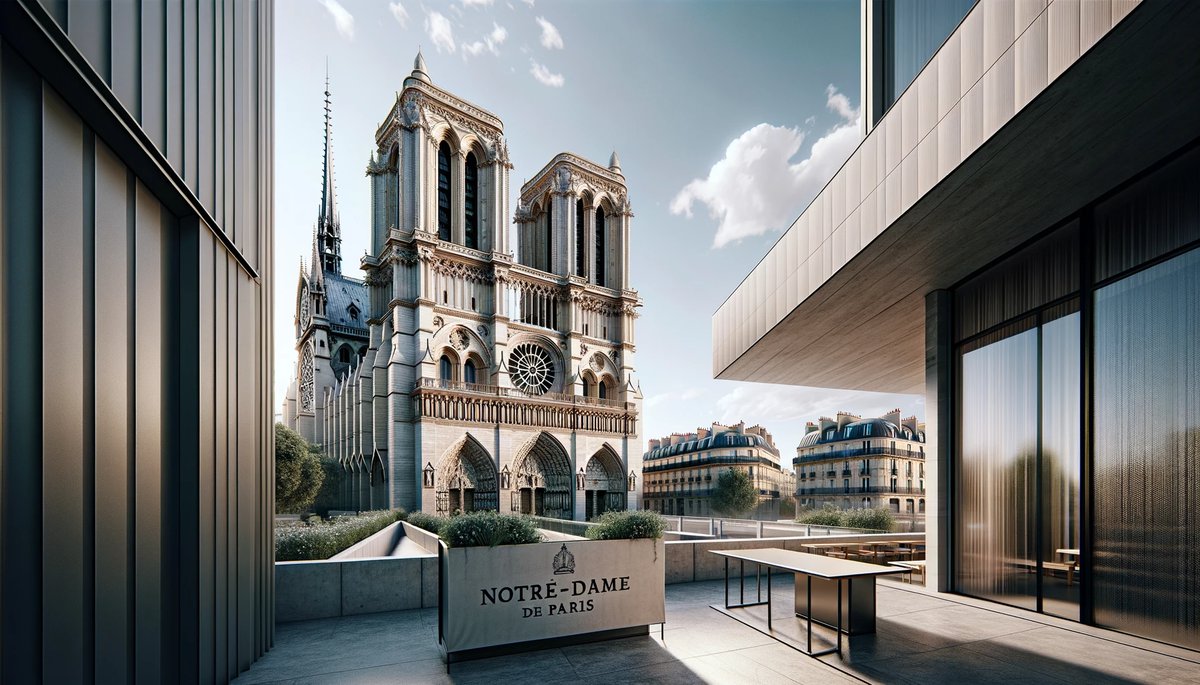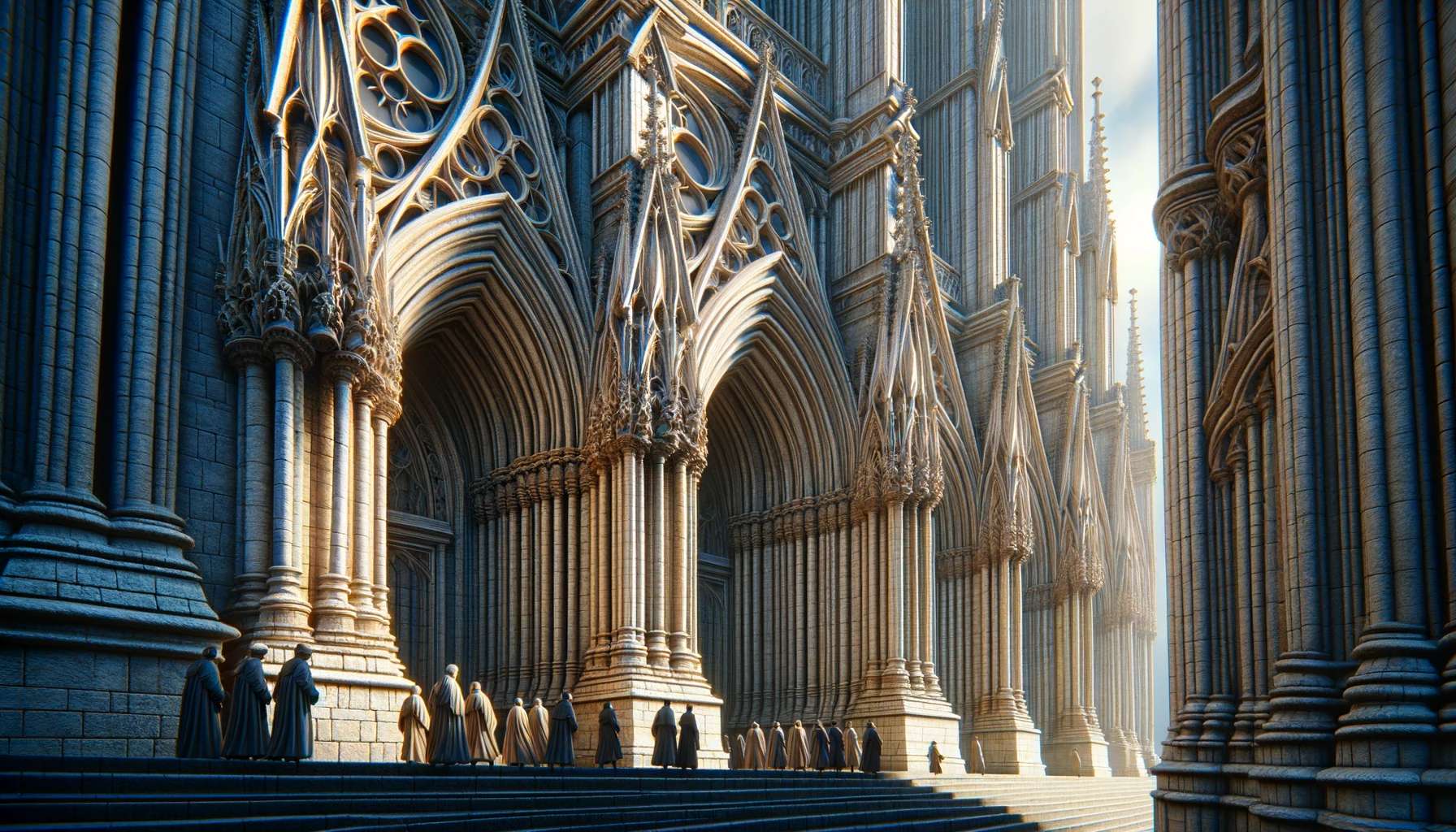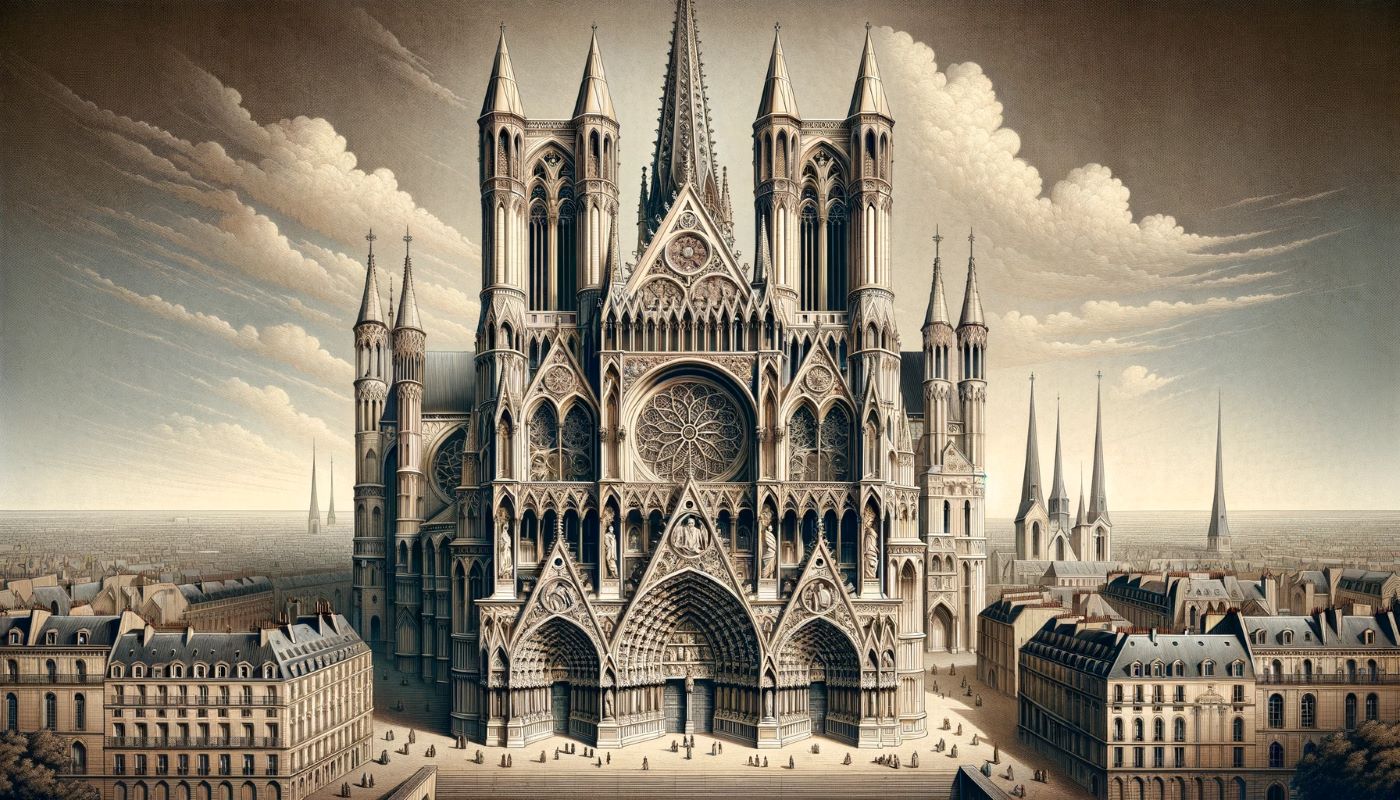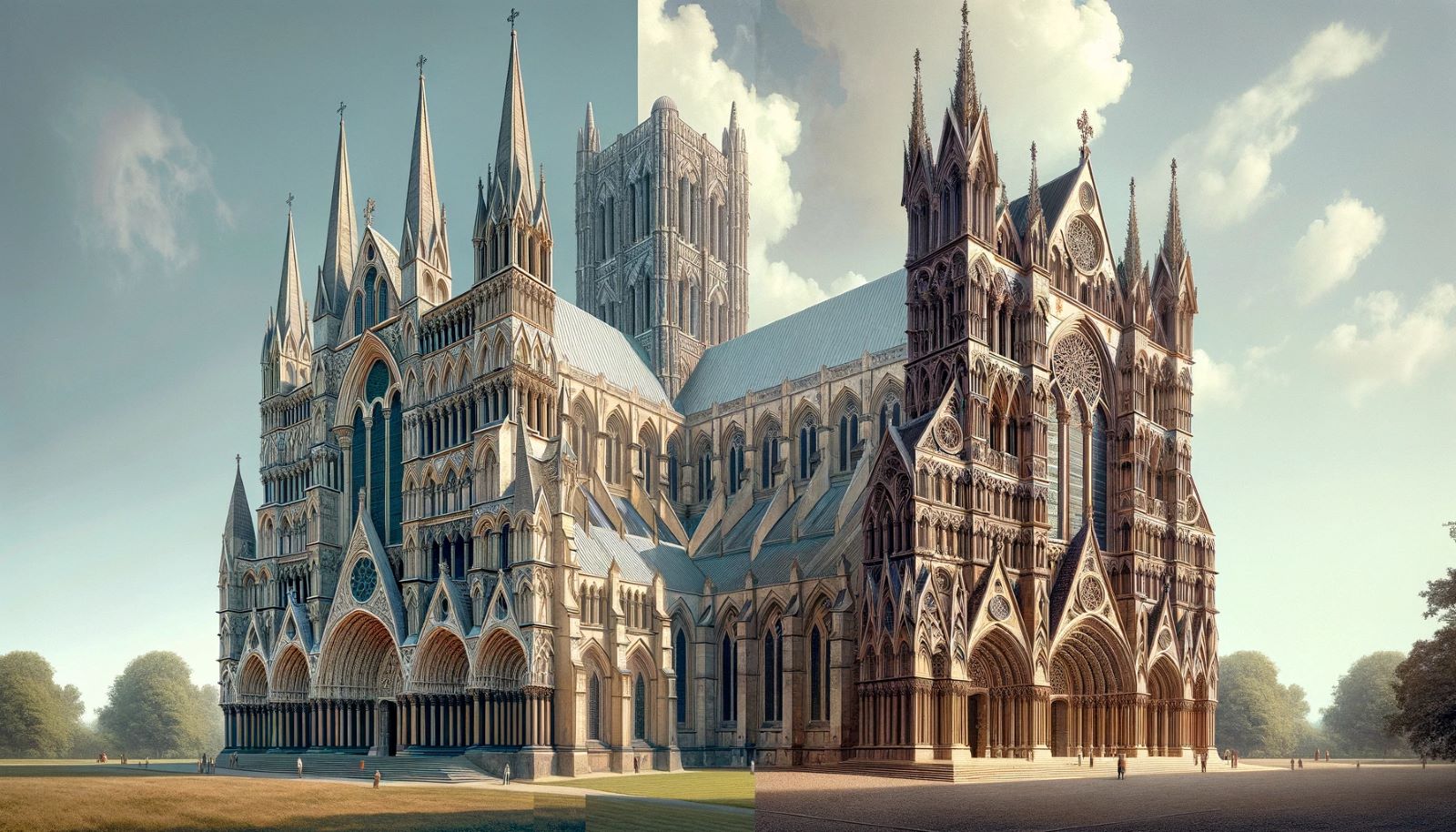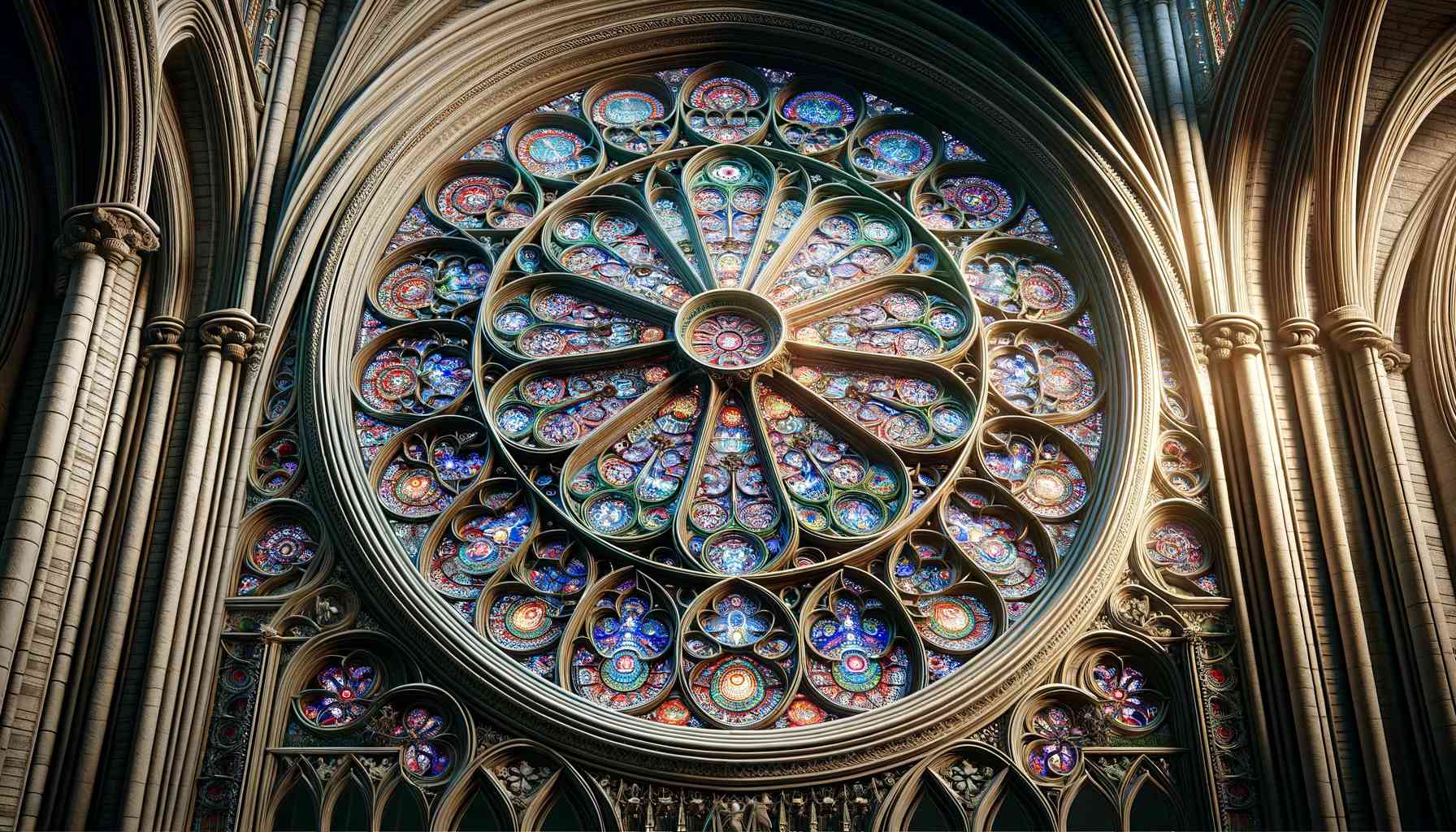Home>Arts and Culture>The Purpose Of The Detailed Sculptures Usually Found On The Exterior Of A Gothic Cathedral
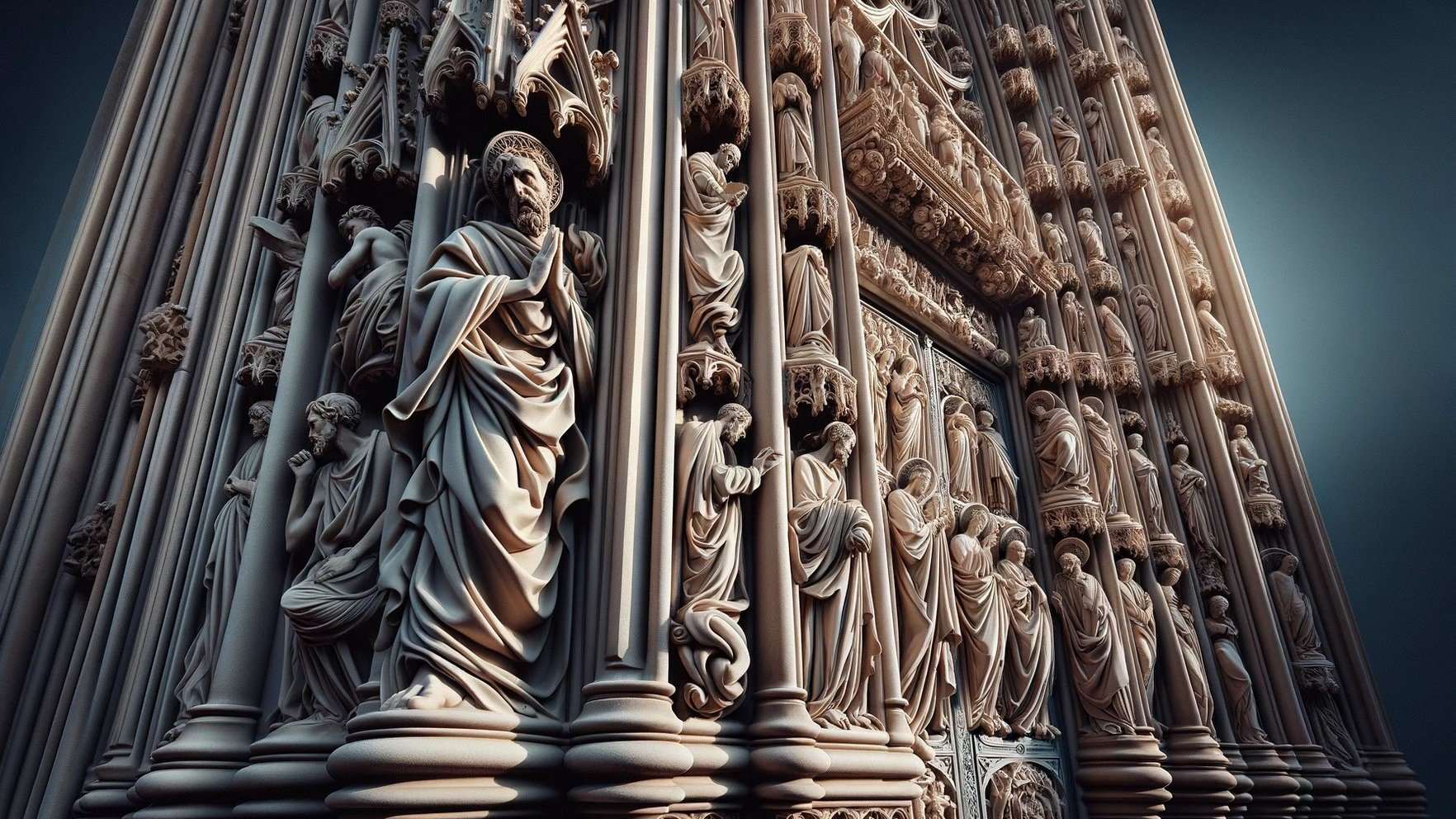

Arts and Culture
The Purpose Of The Detailed Sculptures Usually Found On The Exterior Of A Gothic Cathedral
Published: February 16, 2024
Ericka Andersen, an editor at Christian.net, expertly merges digital strategy with content creation, focusing on faith and societal issues. Her communication skills enhance the platform's engaging narratives, fostering meaningful dialogue on belief's impact on society.
Explore the intricate sculptures adorning Gothic cathedrals and their significance in arts and culture. Uncover the purpose behind these detailed architectural masterpieces.
(Many of the links in this article redirect to a specific reviewed product. Your purchase of these products through affiliate links helps to generate commission for Christian.net, at no extra cost. Learn more)
Table of Contents
Introduction
Gothic cathedrals are renowned for their awe-inspiring architecture, characterized by soaring spires, pointed arches, and intricate detailing. One of the most striking features of these magnificent structures is the elaborate sculptures adorning their exteriors. These detailed sculptures serve as a testament to the craftsmanship and artistic prowess of the medieval artisans who dedicated their lives to creating these masterpieces.
The purpose of the detailed sculptures found on the exterior of a Gothic cathedral extends far beyond mere decoration. Each intricately carved figure and scene holds a profound significance, reflecting the religious, cultural, and historical narratives of the era in which they were created. These sculptures are not merely static adornments; rather, they are dynamic storytellers, conveying a rich tapestry of symbolism and meaning that continues to captivate and inspire visitors to this day.
As we delve into the historical background and delve into the role, symbolism, and significance of these sculptures, we will gain a deeper appreciation for the profound impact they have had on the cultural and spiritual landscape of the medieval world. Join me on this journey as we unravel the mysteries and marvels of the detailed sculptures that grace the exteriors of Gothic cathedrals, and discover the profound stories they have to tell.
Read more: What Makes A Gothic Cathedral
Historical Background of Gothic Cathedrals
The emergence of Gothic cathedrals marked a pivotal shift in architectural and artistic expression during the medieval period. The term "Gothic" was initially used pejoratively to describe the architectural style that deviated from the classical norms of ancient Rome. However, over time, it came to symbolize a distinct and influential movement that revolutionized the construction of sacred spaces.
The roots of Gothic architecture can be traced back to 12th-century France, particularly in the Île-de-France region, where the construction of the Abbey Church of St. Denis under the supervision of Abbot Suger laid the foundation for a new architectural vision. This visionary approach sought to transcend the limitations of Romanesque architecture by introducing innovative structural elements such as pointed arches, ribbed vaults, and flying buttresses. These advancements allowed for the creation of soaring, light-filled interiors that inspired a sense of awe and transcendence.
The Gothic style quickly gained momentum and spread throughout Europe, giving rise to a proliferation of magnificent cathedrals and churches. Notable examples include the iconic Notre-Dame Cathedral in Paris, the majestic Chartres Cathedral, and the ethereal beauty of the Reims Cathedral. Each of these architectural marvels reflected the distinctive regional variations and artistic flourishes that contributed to the rich tapestry of Gothic design.
The construction of Gothic cathedrals was a monumental undertaking that often spanned several decades, if not centuries. Skilled craftsmen, including master stonemasons, sculptors, and artisans, dedicated their lives to bringing these ambitious visions to life. Their collective efforts resulted in the creation of structures that transcended the purely utilitarian aspects of architecture, evolving into profound expressions of faith, ingenuity, and cultural identity.
Furthermore, the Gothic cathedrals served as focal points for the communities in which they were situated, embodying the aspirations and collective spirit of the people. They were not merely places of worship but also symbols of civic pride and communal achievement. The intricate sculptures adorning the exteriors of these cathedrals were integral to this narrative, serving as visual narratives that reinforced the spiritual and cultural significance of these monumental edifices.
In essence, the historical background of Gothic cathedrals is a testament to the transformative power of human creativity and ingenuity. These architectural wonders continue to inspire wonder and admiration, inviting us to delve deeper into the historical, artistic, and spiritual dimensions that define the Gothic legacy.
The Role of Detailed Sculptures in Gothic Architecture
The detailed sculptures adorning the exteriors of Gothic cathedrals play a multifaceted and pivotal role in the overarching narrative of Gothic architecture. These intricate carvings are not merely ornamental embellishments but serve as integral components of the architectural ensemble, contributing to the overall visual impact and symbolic resonance of these monumental structures.
First and foremost, the sculptures function as visual narratives, conveying a rich tapestry of religious, historical, and allegorical themes. Each figure and scene depicted in stone tells a story, inviting the viewer to engage with the sacred and secular narratives of the medieval world. From biblical episodes and hagiographic accounts to scenes of everyday life and fantastical creatures, the sculptures serve as a visual compendium of the beliefs, values, and aspirations of the era in which they were created.
Furthermore, the sculptures serve a didactic function, imparting moral and theological lessons to the illiterate masses. In an age when the majority of the population was unable to read or write, these sculpted narratives served as powerful teaching tools, elucidating the fundamental tenets of Christian doctrine and morality. The vivid and expressive nature of the sculptures allowed for the dissemination of religious teachings in a compelling and accessible manner, transcending linguistic barriers and fostering a sense of communal understanding and spiritual enlightenment.
Moreover, the sculptures contribute to the overall aesthetic harmony and structural coherence of Gothic architecture. They are meticulously integrated into the architectural fabric, enhancing the verticality and rhythm of the facades while enlivening the exteriors with a profusion of detail and dynamism. The interplay of light and shadow on the intricately carved surfaces further accentuates the sculptural motifs, imbuing the facades with a sense of depth and vitality.
In essence, the detailed sculptures in Gothic architecture serve as conduits of meaning, beauty, and spiritual resonance. They embody the collective aspirations and creative ingenuity of the medieval artisans, transcending the boundaries of time and culture to inspire and uplift generations of admirers. As we continue to explore the profound significance of these sculptures, we will gain a deeper appreciation for their enduring impact on the architectural, artistic, and spiritual heritage of humanity.
Symbolism and Meaning Behind the Sculptures
The detailed sculptures adorning the exteriors of Gothic cathedrals are imbued with profound symbolism and meaning, serving as visual allegories that convey theological, moral, and cultural significance. Each sculpted figure and motif encapsulates layers of symbolism, inviting contemplation and interpretation.
One of the central themes depicted in the sculptures is the narrative of salvation and redemption, drawn from biblical accounts and Christian doctrine. Scenes portraying the life of Christ, the Virgin Mary, and the saints are prevalent, symbolizing the divine grace and sacrifice central to Christian belief. The intricate carvings of the Nativity, Crucifixion, and Resurrection serve as potent reminders of the redemptive power of Christ's sacrifice, offering solace and hope to the faithful.
In addition to biblical narratives, the sculptures also incorporate a rich tapestry of symbolic imagery drawn from medieval allegory and folklore. Fantastic creatures such as gargoyles, griffins, and dragons populate the architectural ensemble, representing the eternal struggle between good and evil. These mythical beings serve as guardians of the sacred space, warding off malevolent forces and symbolizing the triumph of virtue over vice.
Moreover, the sculptures often feature allegorical representations of virtues and vices, personified in the form of human figures. The juxtaposition of virtuous attributes such as charity, humility, and fortitude with vices like greed, pride, and discord serves as a moral exhortation, reminding viewers of the eternal struggle between righteousness and sin.
The natural world also finds expression in the sculpted motifs, with flora and fauna symbolizing renewal, abundance, and the divine order of creation. Intricately carved foliage, flowers, and animals evoke a sense of harmony and vitality, underscoring the interconnectedness of the physical and spiritual realms.
Furthermore, the sculptures incorporate elements of political and social commentary, reflecting the power dynamics and societal values of the medieval world. Kings, queens, and nobles are often depicted alongside scenes of courtly life, chivalric ideals, and the pursuit of earthly glory, offering insights into the complex interplay of temporal and spiritual authority.
In essence, the symbolism and meaning behind the sculptures in Gothic architecture are multifaceted and richly nuanced, inviting viewers to embark on a symbolic journey that transcends the boundaries of time and culture. These sculpted narratives continue to resonate with profound significance, offering glimpses into the collective consciousness and spiritual aspirations of the medieval world.
The Artistic and Decorative Function of the Sculptures
The detailed sculptures adorning the exteriors of Gothic cathedrals serve a pivotal artistic and decorative function, contributing to the visual splendor and aesthetic harmony of these monumental edifices. Each intricately carved figure, foliage, and decorative motif represents a testament to the consummate skill and artistic vision of the medieval craftsmen who dedicated themselves to the creation of these masterpieces.
From a purely artistic standpoint, the sculptures exemplify the highest levels of craftsmanship and technical virtuosity. The meticulous attention to detail, the expressive dynamism of the figures, and the intricate interplay of light and shadow showcase the unparalleled skill of the sculptors. Every sculpted element, whether a serene angelic figure or a fearsome gargoyle, reflects a mastery of form and expression that transcends mere stone and mortar.
Furthermore, the decorative function of the sculptures is integral to the overall visual impact of Gothic architecture. The facades of Gothic cathedrals are transformed into veritable galleries of stone, adorned with a profusion of sculpted ornamentation that enlivens the surfaces with a sense of vitality and rhythm. The intricate tracery, delicate foliate designs, and captivating figural sculptures contribute to the vertical emphasis and upward thrust characteristic of Gothic design, creating a sense of ethereal grandeur and spiritual aspiration.
Moreover, the sculptures serve as integral components of the architectural ensemble, enhancing the structural coherence and aesthetic unity of the cathedrals. They are meticulously integrated into the fabric of the buildings, enriching the facades with a wealth of visual motifs that harmonize with the overall design. The interplay of the sculptures with the architectural elements, such as the tracery of windows and the rhythmic articulation of the facades, creates a sense of organic unity and visual splendor.
In essence, the artistic and decorative function of the sculptures in Gothic architecture transcends mere embellishment, embodying the pinnacle of artistic achievement and contributing to the transformative power of these sacred spaces. As we gaze upon these sculpted marvels, we are transported into a realm where stone becomes poetry, and the creative spirit of the medieval artisans continues to resonate with timeless beauty and inspiration.
The Religious and Spiritual Significance of the Sculptures
The detailed sculptures adorning the exteriors of Gothic cathedrals hold profound religious and spiritual significance, serving as tangible expressions of faith, devotion, and transcendence. These sculpted masterpieces are imbued with a sacred aura, inviting contemplation and reverence as they convey the spiritual aspirations and theological narratives of the medieval world.
At the heart of the religious significance of the sculptures lies their role as conduits of divine presence and sacred symbolism. Each sculpted figure, whether depicting biblical personages, saints, or angelic beings, serves as a visual embodiment of the divine realm, bridging the earthly and celestial spheres. The meticulous craftsmanship and expressive power of the sculptures evoke a sense of awe and reverence, inviting viewers to contemplate the mysteries of faith and the ineffable nature of the divine.
Furthermore, the sculptures serve as instruments of spiritual instruction and contemplation, offering visual meditations on the fundamental tenets of Christian belief. Scenes depicting the life of Christ, the martyrdom of saints, and the triumph of virtue over vice serve as poignant reminders of the redemptive narrative at the core of Christian faith. The intricate details and emotive portrayals of these sacred narratives invite viewers to engage in contemplative reflection, fostering a deeper connection to the spiritual truths encapsulated in the sculpted forms.
Moreover, the sculptures function as embodiments of collective devotion and communal piety. The labor-intensive process of creating these intricate carvings involved the collective efforts of skilled artisans, patrons, and the wider community. The act of adorning the cathedrals with these sculpted narratives was a testament to the collective faith and spiritual aspirations of the medieval society, reflecting a shared commitment to the glorification of the divine through artistic expression.
In essence, the religious and spiritual significance of the sculptures in Gothic architecture transcends their role as mere decorative elements. They stand as enduring testaments to the profound spiritual yearnings and unwavering faith of the medieval world, inviting us to partake in a visual pilgrimage that transcends the boundaries of time and culture. As we behold these sculpted marvels, we are reminded of the enduring power of art to elevate the soul and inspire a sense of transcendent wonder.
Conclusion
In conclusion, the detailed sculptures adorning the exteriors of Gothic cathedrals stand as enduring testaments to the profound impact of art, faith, and human creativity. These intricately carved masterpieces transcend mere stone and mortar, inviting us to embark on a visual and spiritual journey that spans centuries and continents. From their role as visual narratives and didactic tools to their profound symbolism and religious significance, the sculptures embody the collective aspirations and spiritual yearnings of the medieval world.
As we gaze upon these sculpted marvels, we are transported into a realm where stone becomes poetry, and the creative spirit of the medieval artisans continues to resonate with timeless beauty and inspiration. The historical background of Gothic cathedrals, with their visionary architectural innovations and communal significance, provides a compelling backdrop for understanding the cultural and spiritual context in which these sculptures were created.
The symbolism and meaning behind the sculptures offer profound insights into the theological, moral, and allegorical dimensions of the medieval worldview. Each sculpted figure and motif encapsulates layers of symbolism, inviting contemplation and interpretation, and serving as visual allegories that convey theological, moral, and cultural significance.
Furthermore, the artistic and decorative function of the sculptures exemplifies the highest levels of craftsmanship and technical virtuosity, contributing to the visual splendor and aesthetic harmony of these monumental edifices. The meticulous attention to detail, the expressive dynamism of the figures, and the intricate interplay of light and shadow showcase the unparalleled skill of the sculptors, transcending mere stone and mortar.
The religious and spiritual significance of the sculptures invites contemplation and reverence as they convey the spiritual aspirations and theological narratives of the medieval world. These sculpted masterpieces are imbued with a sacred aura, bridging the earthly and celestial spheres and inviting viewers to contemplate the mysteries of faith and the ineffable nature of the divine.
In essence, the detailed sculptures found on the exterior of Gothic cathedrals are not merely static adornments but dynamic storytellers, conveying a rich tapestry of symbolism and meaning that continues to captivate and inspire visitors to this day. They stand as enduring testaments to the profound impact of art, faith, and human creativity, inviting us to partake in a visual pilgrimage that transcends the boundaries of time and culture.
